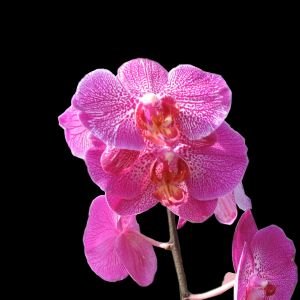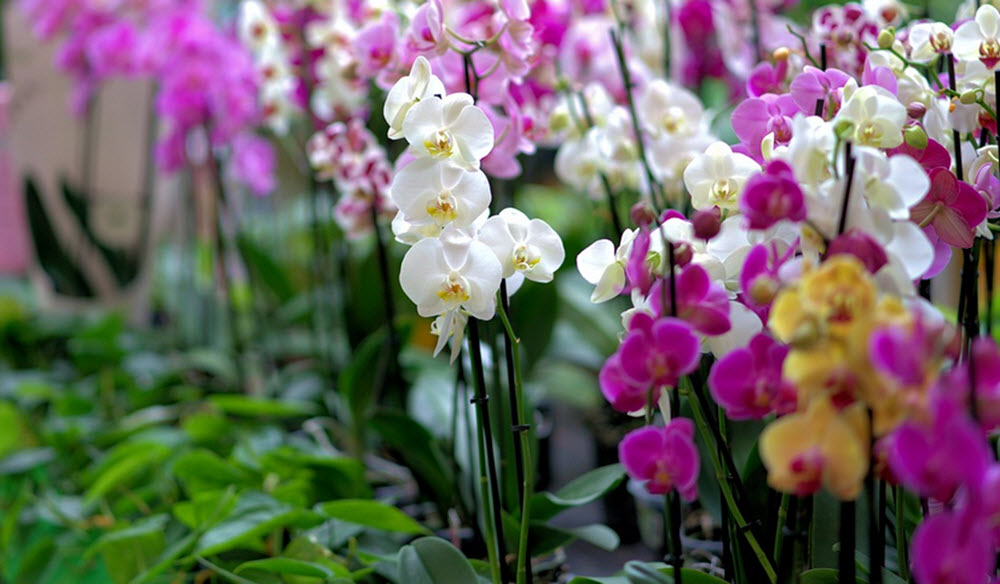Phalaenopsis Orchid Care
Contents
Phalaenopsis orchids are among the most popular orchids worldwide and can be found in numerous homes, offices and hotels. These orchids are native to Asia and northern Australia. In Asia, they grow from the Himalayan Mountains to the Philippine Islands.
Phalaenopsis Species
>
Phalaenopsis is a genus of orchids that consists of approximately 60 species. They are popular houseplants due to their attractive flowers and relatively easy care requirements.
Some common Phalaenopsis species include:
- Phalaenopsis amabilis: This species is native to the Philippines and is known for its fragrant, yellow flowers. It is also called the “moth orchid” or the “peaceful moth orchid.”
- Phalaenopsis bellina: This species is native to Indonesia and is known for its small, white flowers with purple markings. It is also called the “dwarf moth orchid.”
- Phalaenopsis gigantea: This species is native to the Philippines and is known for its large, white flowers with purple markings. It is also called the “giant moth orchid.”
- Phalaenopsis lindenii: This species is native to New Guinea and is known for its large, white flowers with purple markings. It is also called the “Linden’s moth orchid.”
- Phalaenopsis schilleriana: This species is native to the Philippines and is known for its large, white flowers with purple markings. It is also called the “Schiller’s moth orchid.”
These are just a few examples of the many Phalaenopsis species available. Each species has its own unique characteristics and may have slightly different care requirements. Besides these naturally occurring species, you will also find countless man-made cultivars and hybrids.
Phalaenopsis hybrids
Phalaenopsis hybrids are popular among orchid growers and collectors because they can offer a wide range of flower colors and forms. Some common Phalaenopsis hybrids include:
- Phalaenopsis stuartiana: This hybrid is created by crossing Phalaenopsis amabilis and Phalaenopsis parishii. It is known for its large, fragrant, white flowers with purple markings.
- Phalaenopsis Doritaenopsis: This hybrid is created by crossing Phalaenopsis bellina and Phalaenopsis aphrodite. It is known for its small, white flowers with purple markings.
- Phalaenopsis x spatulata: This hybrid is created by crossing Phalaenopsis gigantea and Phalaenopsis lindenii. It is known for its large, white flowers with purple markings.
- Phalaenopsis x leucorrhoda: This hybrid is created by crossing Phalaenopsis schilleriana and Phalaenopsis bellina. It is known for its small, white flowers with pink markings.
There are many other Phalaenopsis hybrids available, each with its own unique characteristics. As with any orchid, it is important to research the specific care requirements of a Phalaenopsis hybrid before purchasing it to ensure that you can provide the plant with the proper care it needs to thrive.
Characteristics

Phalaenopsis orchid
Phalaenopsis orchids have a so-called monopodial growth habit and grow upward from a single point. The plant consists of an erect rhizome that will produce one or two leaves from the top each year. Phalaenopsis leaves are thick and fleshy, and their shape is elliptical. As new leaves are produced, old leaves will fall off. This system means that a Phalaenopsis orchid normally has 4-5 leaves at all times. Strong and well-established orchids that grow in ideal conditions can have over 10 leaves simultaneously. Unlike many other orchids, Phalaenopsis orchids produce no pseudobulbs.
The genus Phalaenopsis contains about 60 described species, and there is also a wide range of cultivars. Phalaenopsis orchids are extremely popular in the floral trade, partly due to the fact that these orchids can bloom for several weeks and are known to last 2-3 months indoors if you give them proper Phalaenopsis orchid care. Phalaenopsis orchids can also bloom more than once a year.
Phalaenopsis orchids are also known as “Moth Orchids” and the scientific name Phalaenopsis is believed to be derived from the genus Phalaena, a genus containing a type of big moths. The flowers of some Phalaenopsis orchid species look a bit like large flying moths.
Watering
As mentioned above, Phalaenopsis orchids do not fare well if left with “their feet wet”, and it is, therefore, important to water no more than what is necessary to keep the potting medium moist just below the surface.
Proper watering is important for the health and growth of Phalaenopsis orchids. Here are some tips for watering your Phalaenopsis orchid:
- Water your orchid once or twice a week, depending on the humidity and temperature in your home. In general, orchids prefer to dry out slightly between waterings.
- Water your orchid early in the day, so that the leaves have time to dry out before nightfall. This will help prevent the development of fungal diseases.
- Use lukewarm water to water your orchid, as cold water can shock the roots.
- Water your orchid from the bottom, by filling the saucer or pot with water and allowing the plant to absorb the moisture it needs. This helps to prevent water from accumulating on the leaves, which can lead to rot.
- Avoid letting your orchid sit in standing water, as this can lead to root rot.
- Monitor the moisture level of the potting mix to determine when to water your orchid. A good way to do this is to stick your finger about an inch into the potting mix. If it feels dry, it is time to water your orchid.
By following these watering tips, you can help ensure that your Phalaenopsis orchid stays healthy and blooms beautifully.
Nutrients
A lot of people erroneously believe that the more fertilizer you give your Phalaenopsis orchid, the more flowers it will produce. This is not correct, and force-feeding your orchid large amounts of nutrients is not good Phalaenopsis orchid care.
Fertilizing your Phalaenopsis orchid correctly can help promote healthy growth and beautiful blooms. Here are some tips for fertilizing your Phalaenopsis orchid:
- Use a balanced liquid fertilizer specifically formulated for orchids. Follow the manufacturer’s instructions for dilution and frequency of application.
- Fertilize your orchid every two to four weeks during the growing season (generally spring through fall).
- Reduce the frequency of fertilization during the winter months, when your orchid is in a dormant state.
- Avoid fertilizing your orchid if it is not actively growing or if the potting mix is dry.
- Use a weaker dilution of fertilizer than recommended, especially if you are unsure of how much to use. It is better to under-fertilize than to over-fertilize, as excess fertilization can burn the roots and damage the plant.
By following these fertilizing tips, you can help ensure that your Phalaenopsis orchid receives the nutrients it needs to grow and bloom beautifully.

Light
Wild Phalaenopsis orchids often grow on tree branches in humid lowland forests where they are shaded by the thick canopy. This means that they prefer indirect light to scorching direct rays. The standard indoor lighting conditions appreciated by humans are usually adequate for Phalaenopsis orchids as well and you are therefore not required to purchase any special plant lamps to provide them with proper Phalaenopsis orchid care. Intense light, especially mid-day light (11 am to 3 pm) can burn the leaves of a Phalaenopsis orchid.
Temperature
Wild Phalaenopsis orchids are most common in humid lowland forests but some species live in environments where they encounter dry seasons or cool seasons. The preferred day temperature for Phalaenopsis orchids is 75-85° F (24 – 29˚ C), and they appreciate having the temperature lowered during the night, as long as it does not reach below 60° F (15.5˚ C).
An occasional accident in the form of an open window when it is freezing outside can usually be tolerate by a well established Phalaenopsis orchids, but should naturally be avoided if your want your orchids to thrive. The bud is much more sensitive to temperature extremes than the rest of the plant and special care must be given to budding plants. It should also be noted that to low a temperature can cause your Phalaenopsis orchid to stop budding altogether.
Potting medium
A majority of the Phalaenopsis orchids are epiphytic and grow on trees, but some are lithophytic and grow on stones. What both types have in common is the fact they do not grow with their roots submerged in soggy soil. Planting your Phalaenopsis orchids in a medium that does not drain well can therefore cause their roots to rot and decay. Ideally, use a fast-draining potting medium such as medium-grade wood bark for your Phalaenopsis orchids.
Repotting Phalaenopsis orchids
A Phalaenopsis orchid grows upwards without spreading, and these orchids will, therefore, not outgrow their pots. It is, however, still a good idea to repot them every other year to give them a fresh medium. After repotting, it is best to water scarcely to give the new roots a chance to establish themselves. Your Phalaenopsis orchid needs to be repotted right away if the potting medium starts to smell bad, loses its normal draining capacity, or becomes infected by mould.
Phalaenopsis orchid care tips!
When the blooms of your Phalaenopsis orchid have faded, you can cut the spike above the highest node. If you are lucky, this will cause the plant to develop a new flower spike or even a keiki. Keiki is the Hawaiian word for “baby” and an orchid keiki is a small baby plant that can be placed in its own pot. Sometimes a keiki will flower while still attached to its mother plant. Orchid keikis are always exact clones of their mother since they are not the result of sexual reproduction.
In Other Languages: Phalaenopsis på Svenska